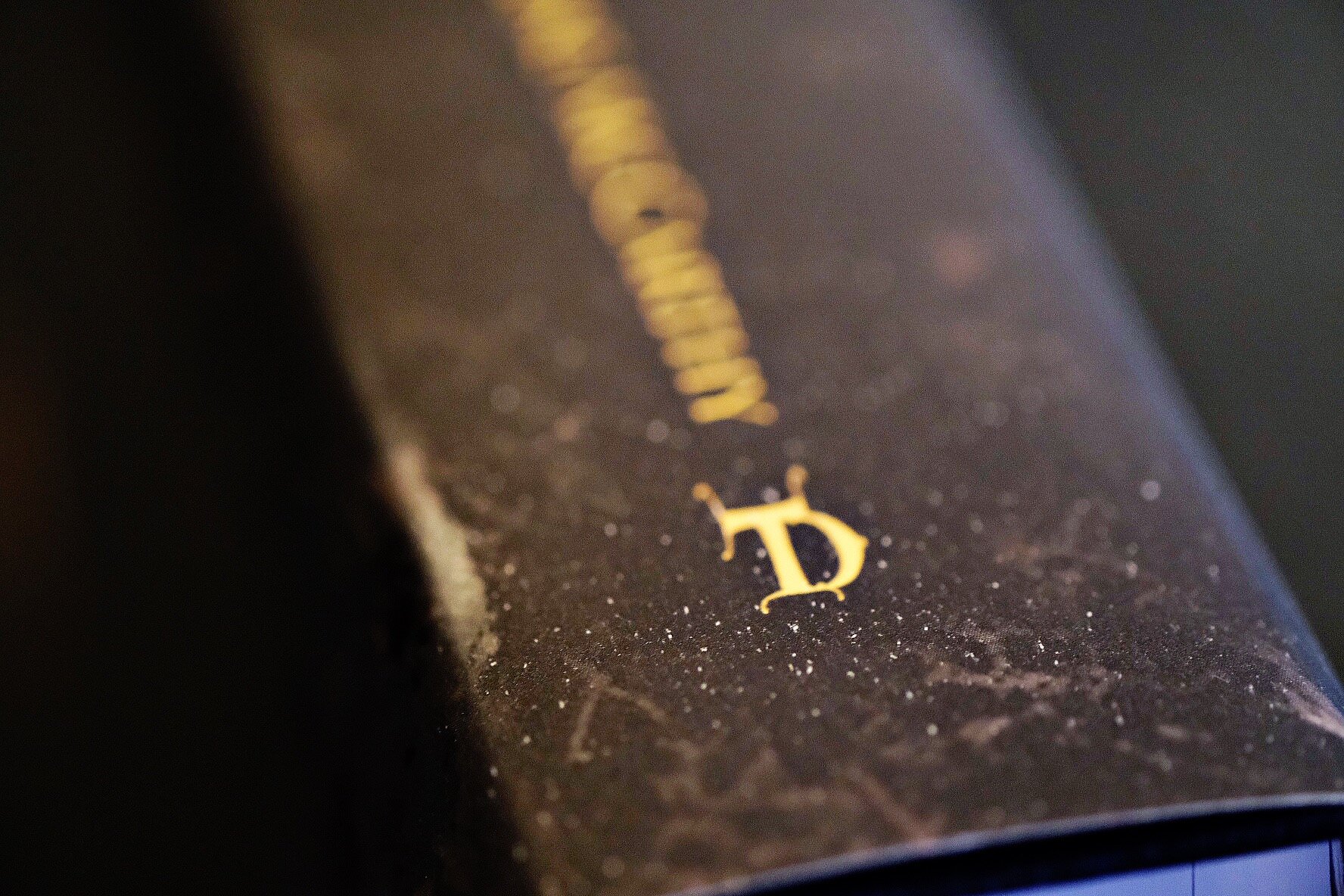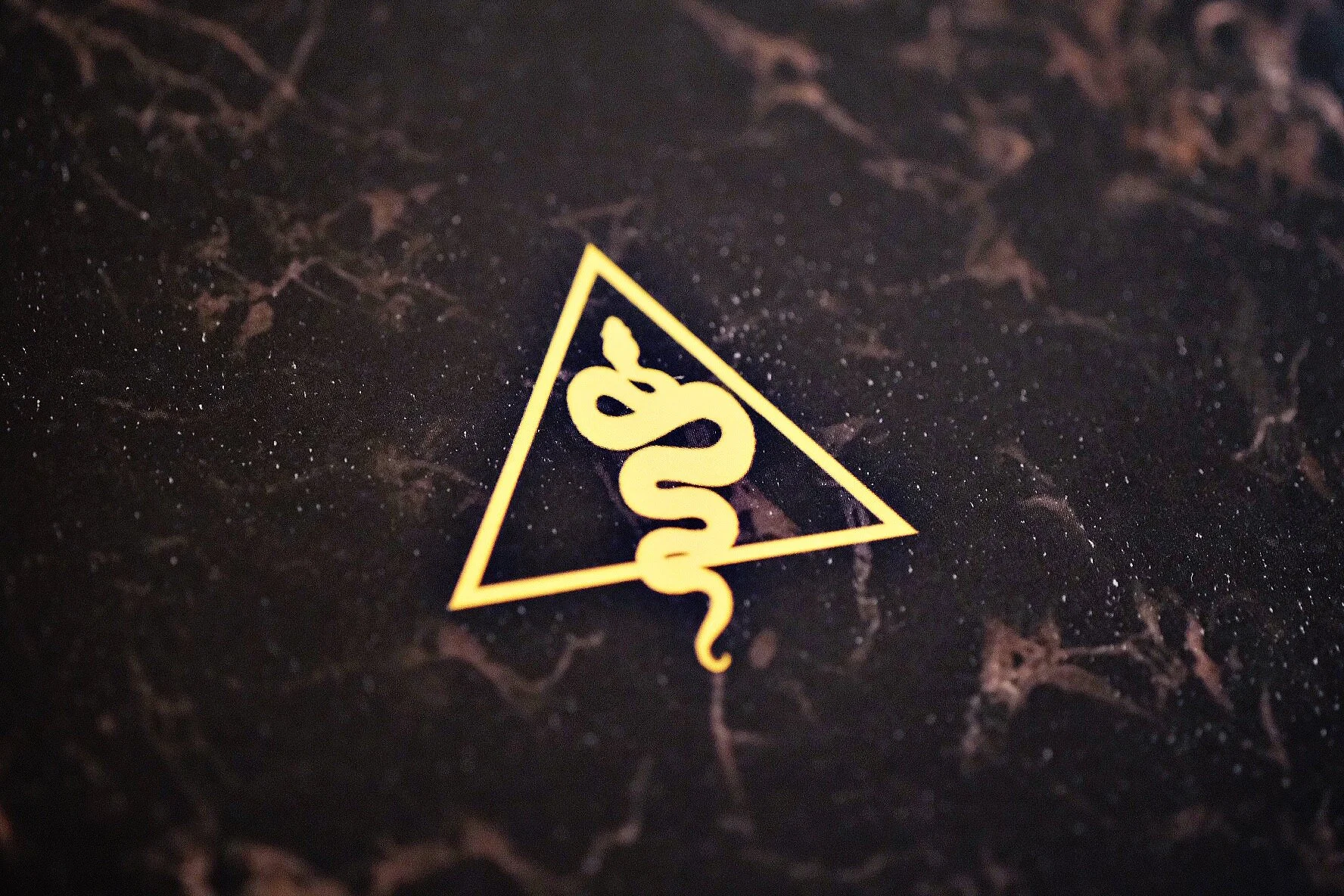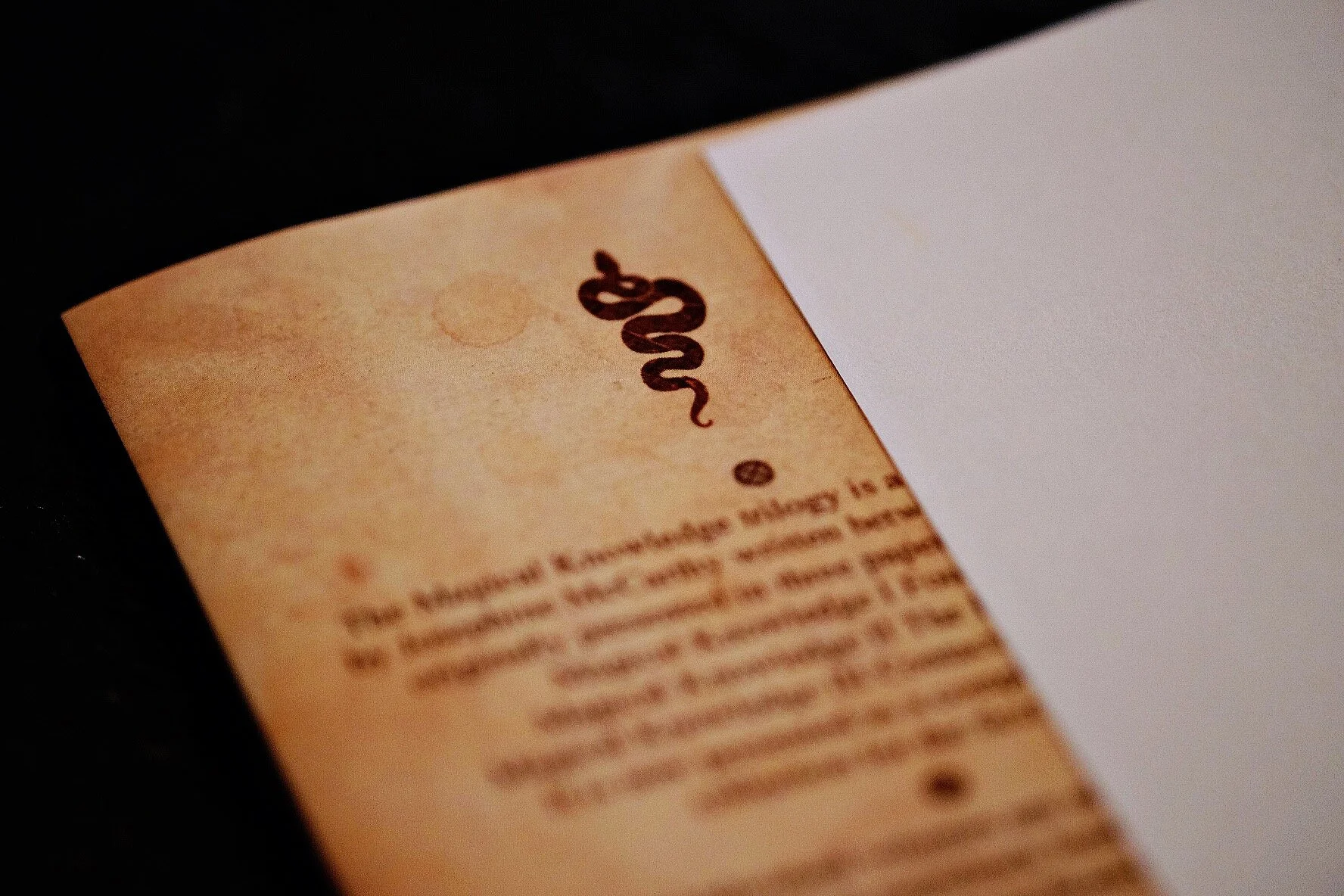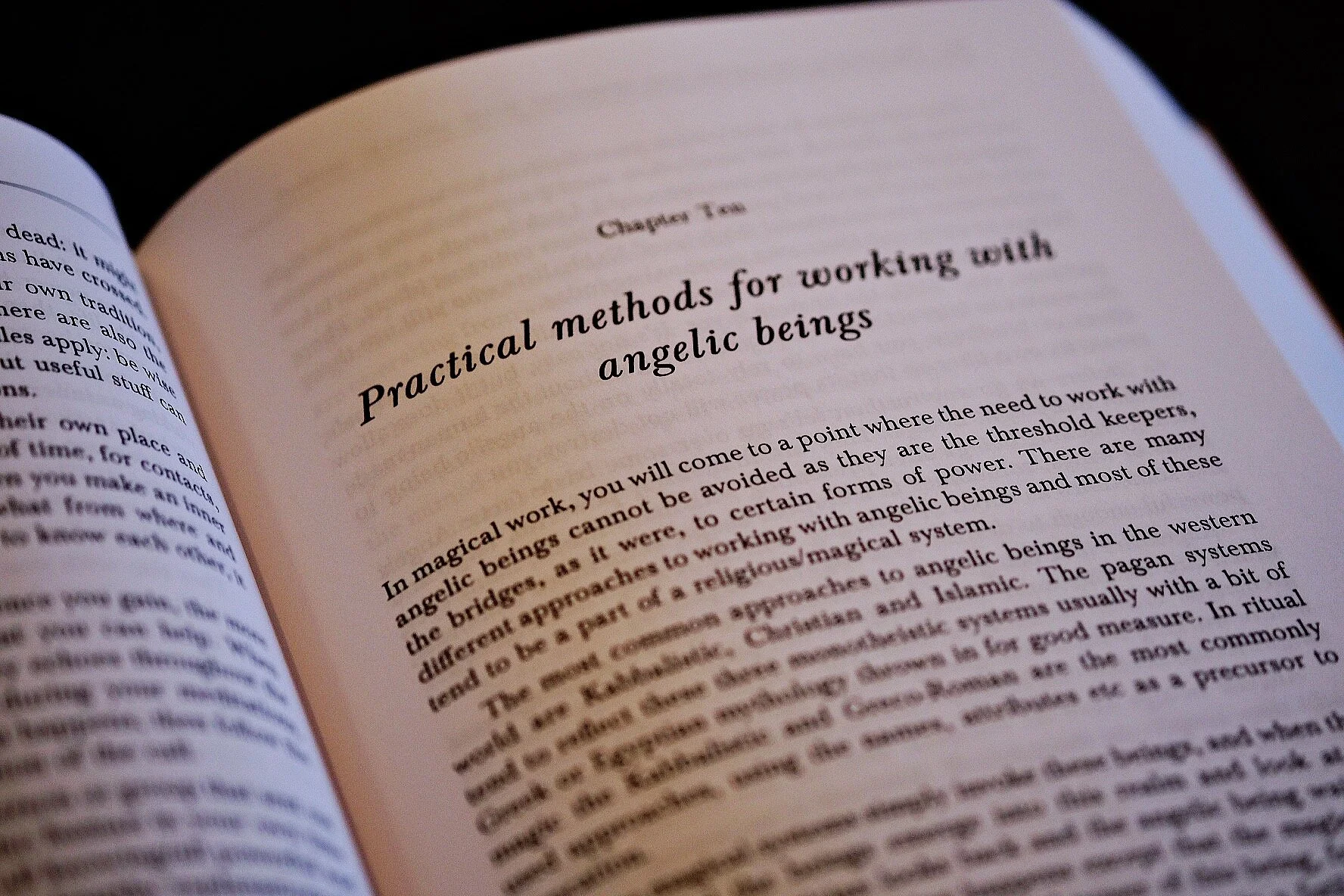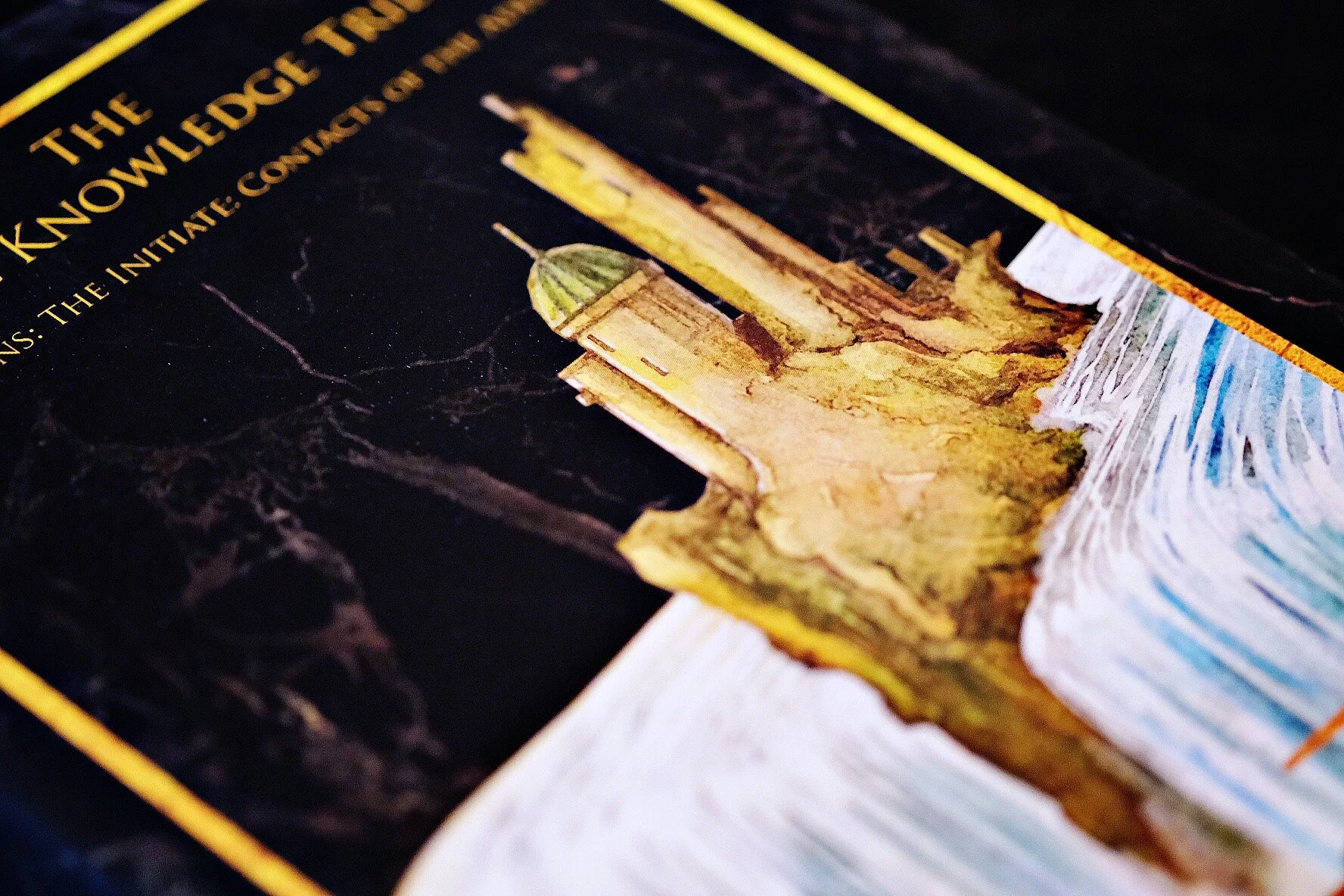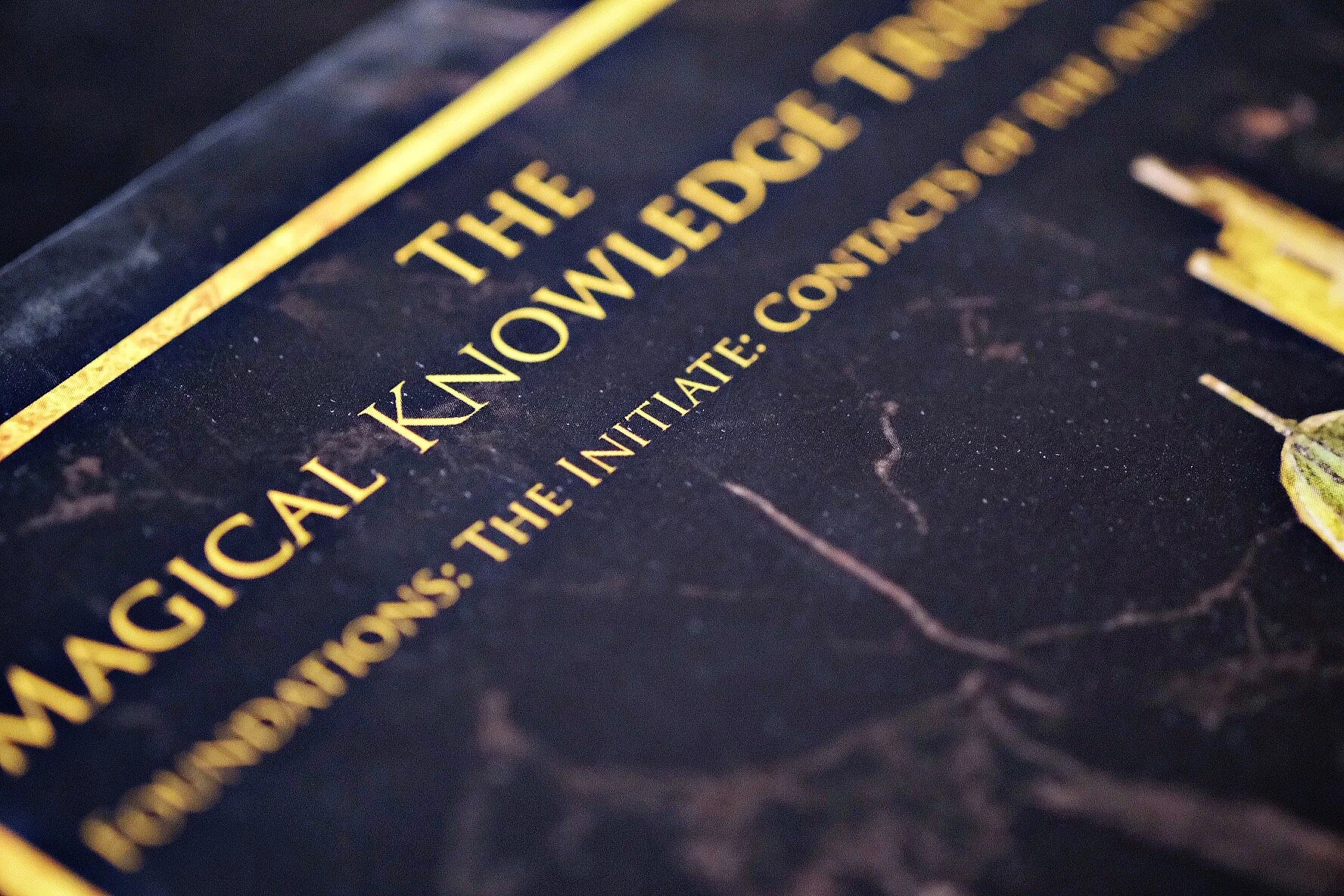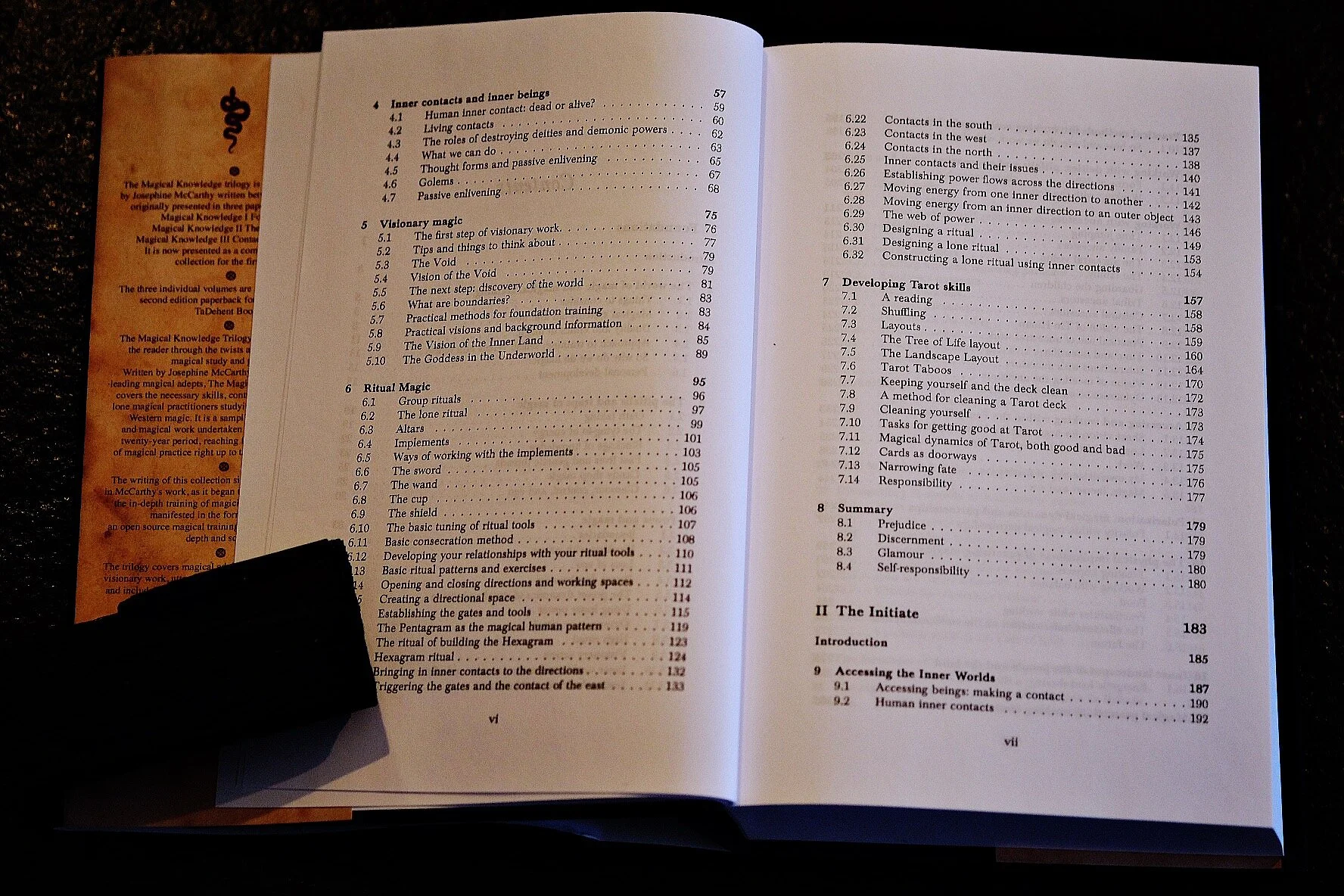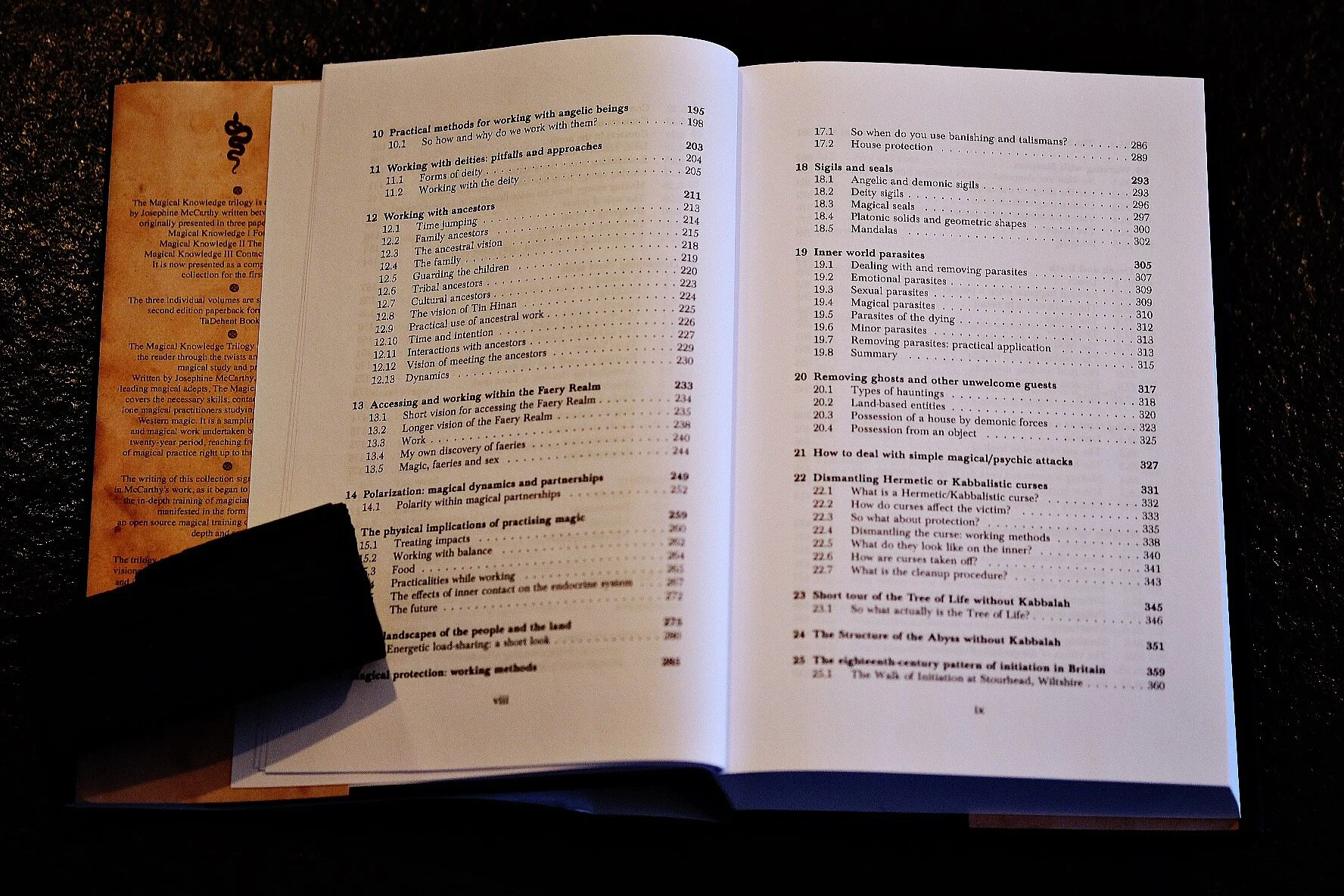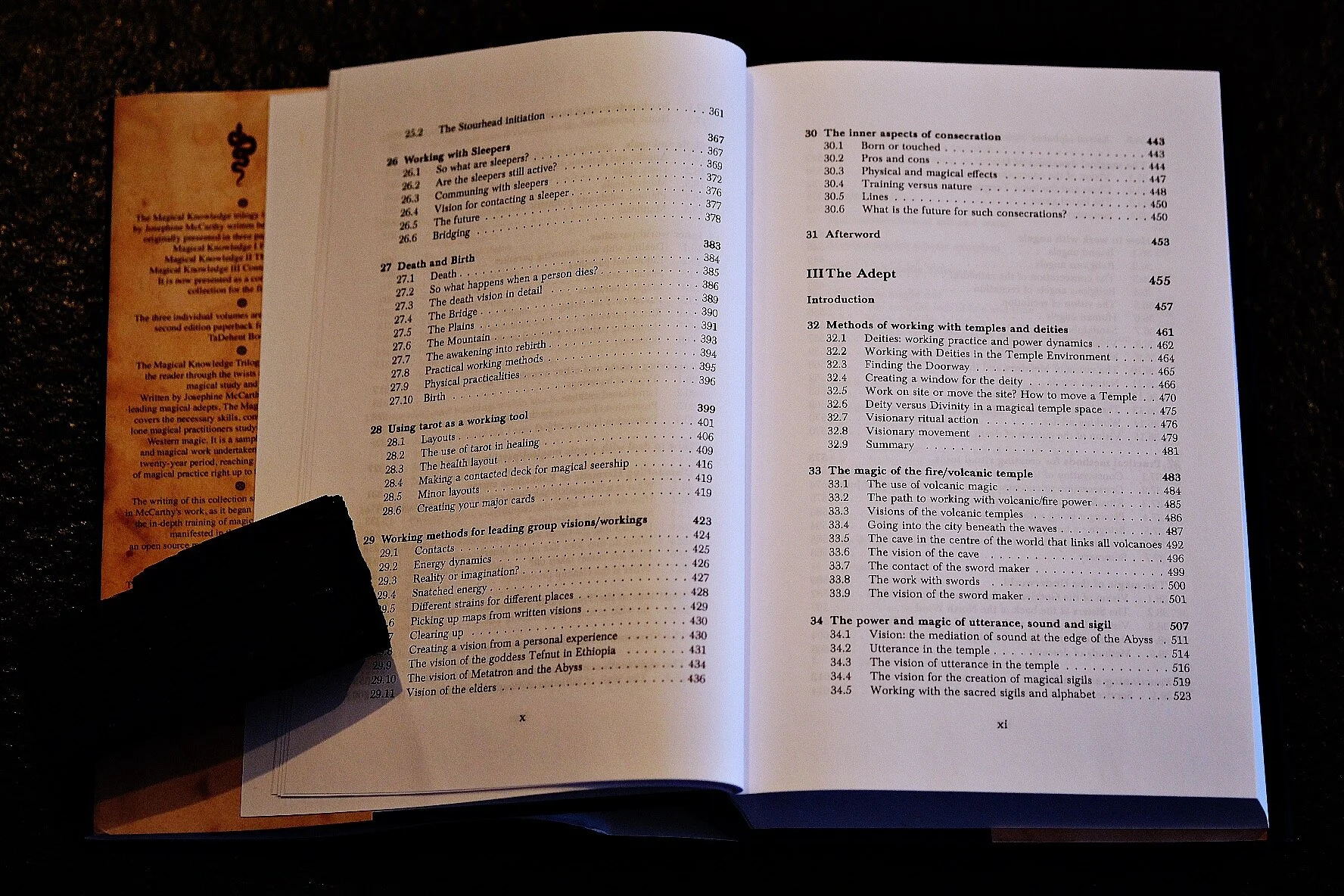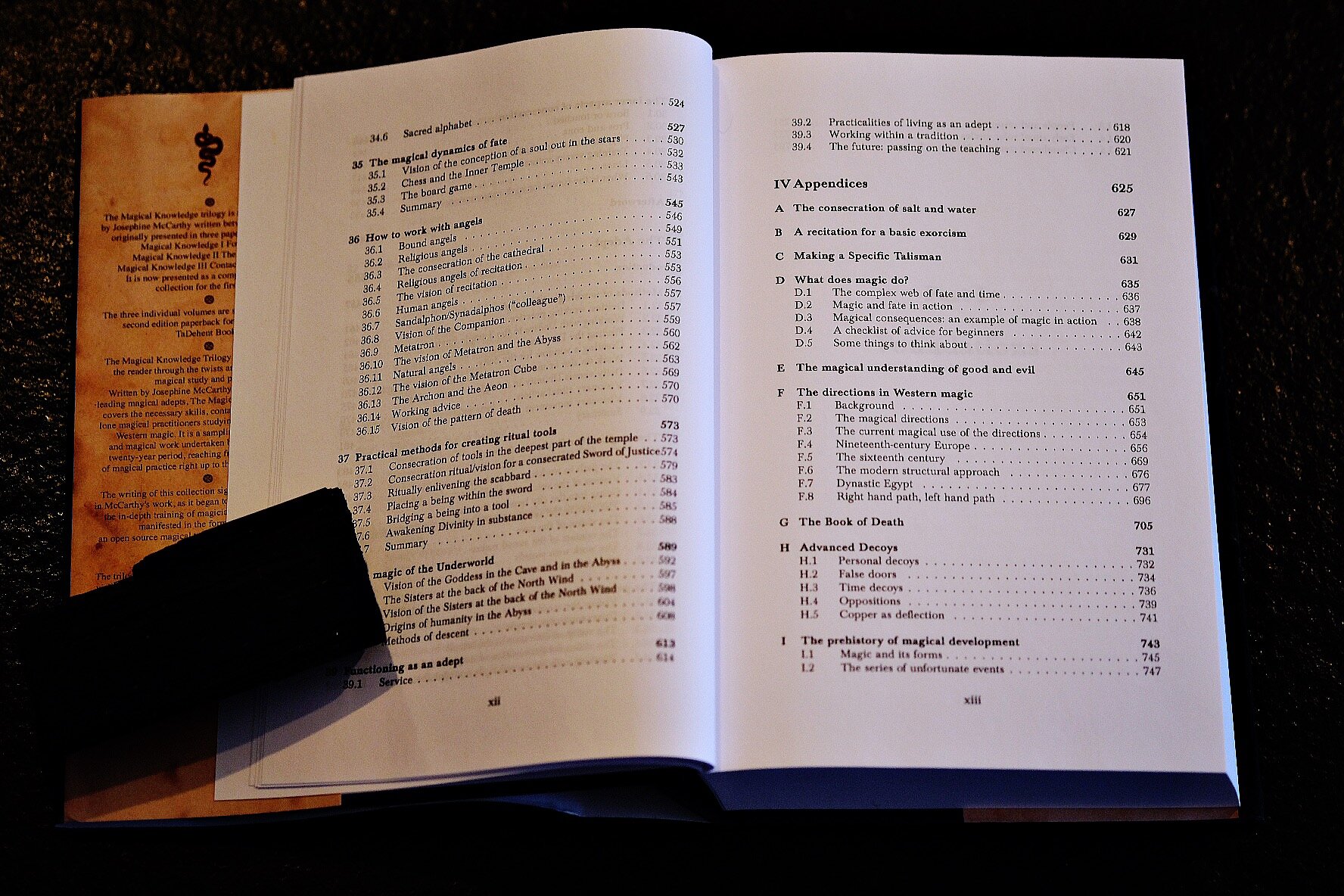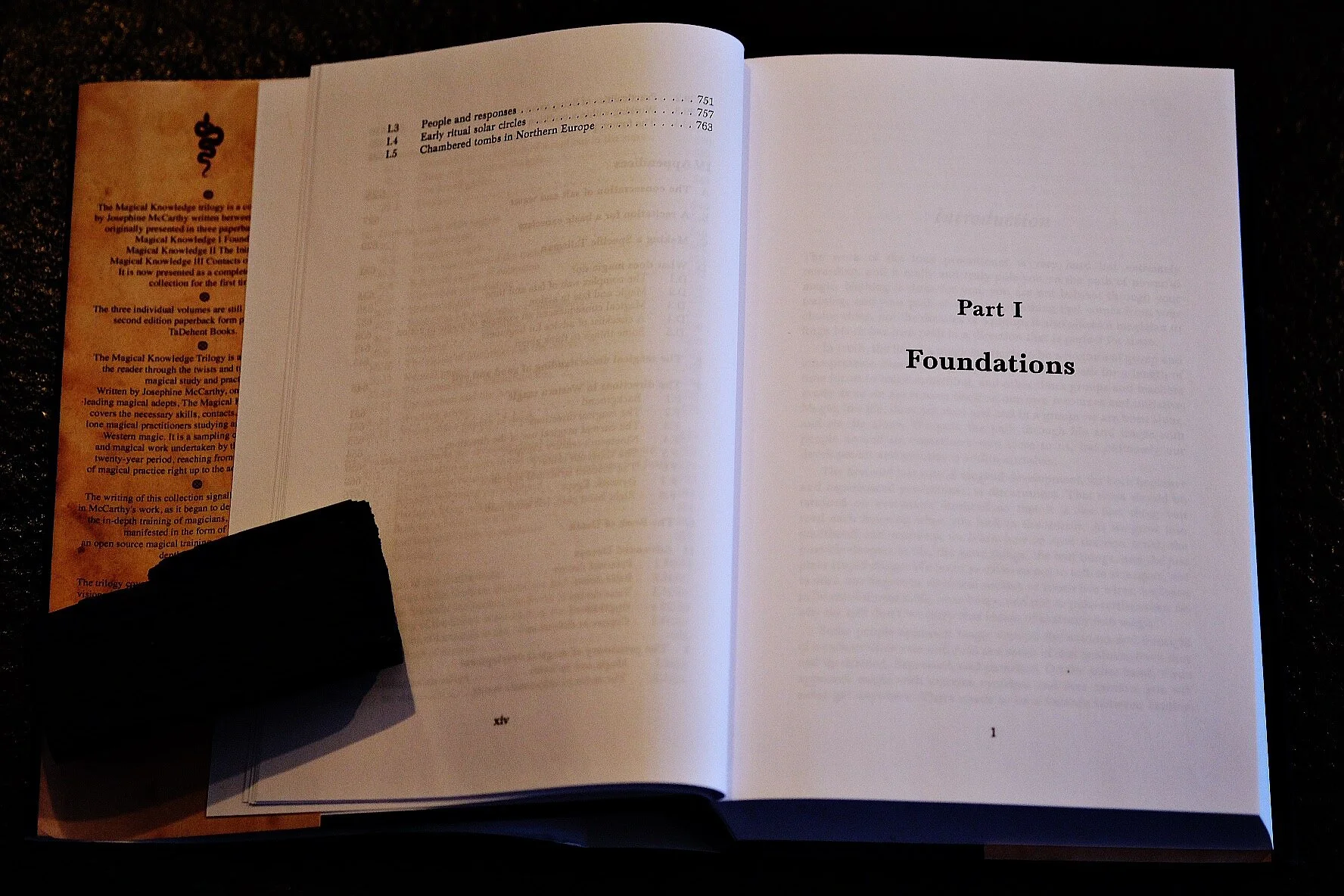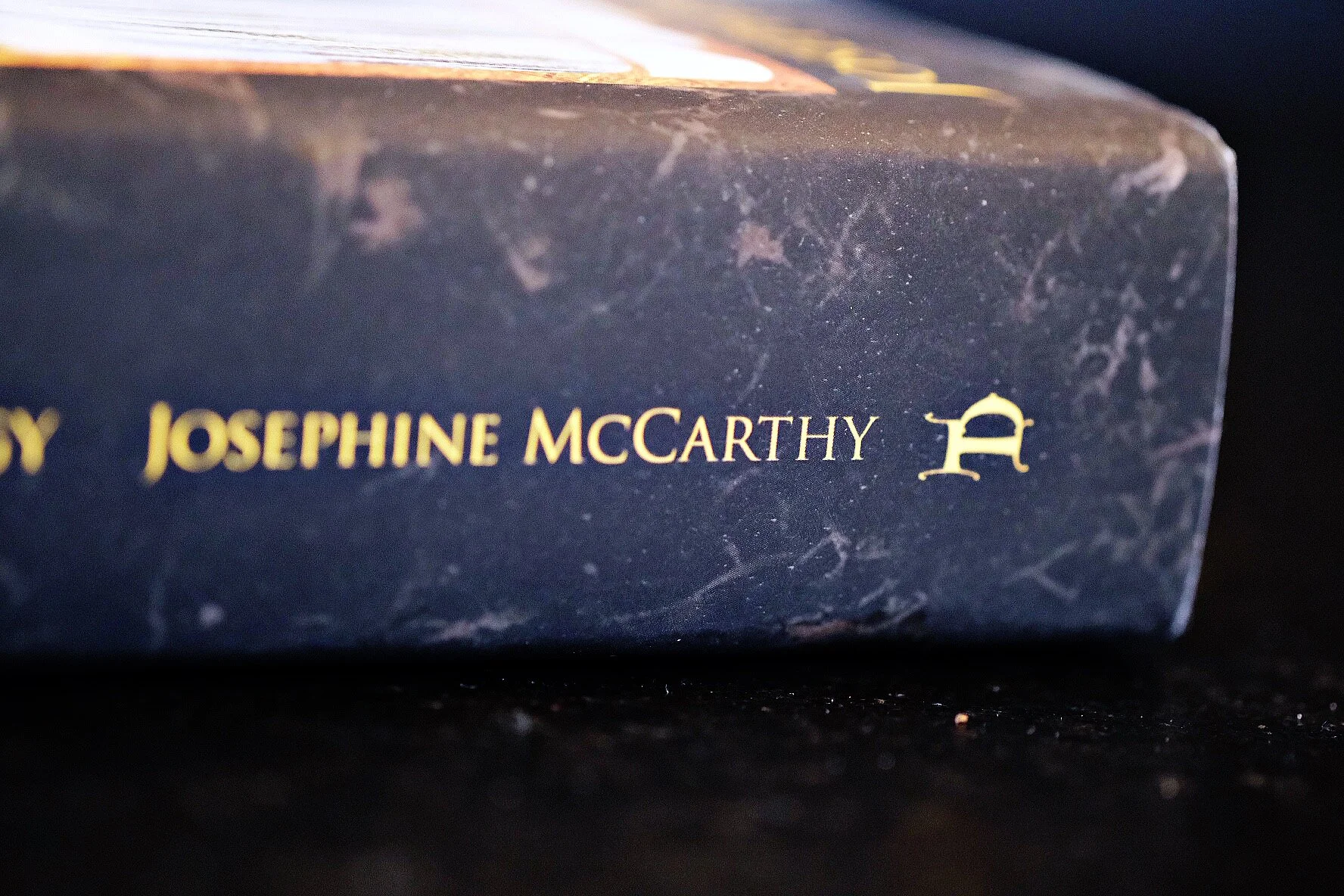‘The Magical Knowledge Trilogy’ by Josephine McCarthy
Review: Josephine McCarthy, The Magical Knowledge Trilogy. Exeter: TaDehent Books 2020, hardcover, 767 pages
The Magical Knowledge Trilogy is, as the title would suggest, three books in one volume: three magical primers or handbooks that hold some kinship with books like Don Kraig’s Modern Magick from 1988 and the work of William G. Gray (1913 – 1992) and his Sangreal Sodality, especially A Self Made by Magic from 1976 and Western Inner Workings from 1983. Kraig and Gray stand out as compelling predecessors for McCarthy’s work, not only due to the interest in the Western Magical Tradition, but also in terms of how the understanding of the Western Tradition owes much to “paganism” and “witchcraft”. Furthermore, both showed a great sensibility for earth and nature as being crucial to magically engage and connect with in order to understand the Western way of magic.
Don Kraig was himself initiated into the witchcraft covens of Raven Grimassi and Scott Cunningham, and Gray was for some time working with Robert Cochrane in his Clan of Tubal Cain. This being said, I must confess that Modern Magick was a book I never managed to get on friendly terms with. It was a magical primer that was much occupied in teaching how to do things within the realm drawn up that always felt slightly claustrophobic to me, and hence it was a book that stimulated because of your disagreements with the ideas presented. William Gray’s work, on the other hand, always read as kind and erudite findings from a person that genuinely wanted to share the shards of wisdom he found.
Josephine’s book follows in the spirit of Gray but with a sharp attention to detail, which leads to this trilogy, being three books that constantly question everything. This is a book that encourages you to want to know why you are doing what you are doing — and the reason for this had better be well reflected and make sense beyond misleading heuristics which do not really affirm anything but nothing…
The three books are structured in a way to become companion volumes for one’s personal magical journey, whether this is travelled solitary or in groups. Hence, the volumes are presented as, firstly, a foundation book followed by a handbook for the initiate or journeyman, with the last being aimed at the adept or the practitioner who has achieved some level of magical mastery and autonomy.
Josephine’s language is direct and frank, with a clear agenda of getting rid of rubbish, bullshit and needless obscuration. This she does by constantly questioning everything and she isn’t satisfied until a satisfactory answer is given, an attitude towards magic that eventually brings clarity, maturity and exaltation into one’s work. Personally, I think that if more people studied occultism and magic with the same spirit of reckless abandonment of the unnecessary and the many trappings of illusion that is so often found standing in the way, modern magic and occultism would be a far more dynamic, vibrant and positive realm of exploration. This “spirit of reckless abandonment” shows itself when she writes:
The major issue that people hit when they begin serious magical study is duality: light and dark, good and bad, the right and left hand paths (a dyslexic’s nightmare). Such separation of the two streams of power is inherently unhealthy and immediately creates an antagonism of power […] Either path studied to any depth will create an imbalance within which the natural flow of power will try to reharmonize itself. (p. 10)
This passage is a good example of what to expect in the next 700 pages and especially in the first of the three books. We find questions, direct messages, and warnings. Constantly we are offered hints on how to master the path of magic, often learned the hard way, by mistakes and errors. The common pitfalls of hubris, power-hunger, ego-fascination and the mere glamour of magic are quickly and often poked, stirred and shaken as these are the most frequent “dead ends” of the practitioner, at least as one sets out on exploring magic as it will affect one’s persona, self-development, ambitions and aims. This first book is such a great “take-no-bullshit” approach to magic, and in addition it gives so many great tools for establishing “inner world” and “outer world” contacts in such a way that it is impossible not to generate some level of discernment reading it. And this is another astounding facet of The Magical Knowledge Trilogy: it is a book that wants you to disagree with it here and there, so you can chisel out your uniqueness more and more precisely as you advance through the lessons and suggestions presented abundantly here.
Josephine will take you on a thorough journey on how to create sacred space, how to consecrate magical tools, how to use tarot cards, how to perform exorcisms, how to stimulate visions and how to curse, bless and protect. And of course this is only a part of what she is offering. Overall, what she gives to the reader is a presentation of a personal magical world where angels, demons, ancestors and fairies are all gathered in precise realms in a finely tuned magical framework with the practitioner at the centre.
There are three key nuclei that she has used to weave this amazing magical handbook, the first being Kabbalah. But it’s a pragmatic and practical use of Kabbalah as an embedded linguistic tool for understanding and relegating experiences relating to quality and essence. The second is the importance she gives to ancestry, both of blood and of spirit, which leads to a powerful idea of how we work in given “lineages” as well as addressing what is found deep within the tapestry of succession at large. The third is Earth and how she, like Robert Cochrane, highlights the importance of working in nature and on sites of magical prowess and power. This generates a great shift in understanding of the Western Tradition when one, instead of working ceremony and ritual in a temple room, is doing all this in nature’s own temple.
I would say that The Magical Knowledge Trilogy really is about Seidr, commonly understood to be some odd form of Nordic shamanism primarily performed by women. The matter is not that simple, however, and what I have in mind here is the elements of vision, fortune telling and prophecy associated with the practice of Seidr and the importance of seeking out places of power for one’s trance and possession works. Thus, it is impossible to take this trilogy on as a mere handbook in the sense of setting the rules, and that was never the intention either, I believe, as it is a very pragmatic book. Actually, The Magical Knowledge Trilogy reads like a travel guide of the most exquisite kind, the one that reveals the fun and danger of the entire continent you had in mind visiting, as it also points out that the best travel is done alone and by foot because it is in this way you find the secret villages of true resonance and meet those whom you should meet at each step and signpost on the path.
The Magical Knowledge Trilogy is a fantastic primer, if not the very best, for someone who has just set his or her foot on the path of magic. Reading this book carefully at the onset of your magical journey will for sure give many valuable hints as it will also help in avoiding some of the most annoying and hurtful pitfalls at the “antechamber of the magical path.”
In the same measure it is also a great book to read and reflect on for those who have been around for a decade or more because it is such a fine work indeed, written in a direct and engaging way. It is a book I will often recommend and to many.

